Product Description and Page Guide for E-Commerce
Glory-Anna Oshafi
Studies have revealed that 81% of consumers do research online before making big purchases. As an e-commerce business owner, one of the main tasks you’ll be faced with is creating product descriptions and pages that satisfy your potential customer’s research queries.
Product description pages offer useful information to online consumers that may persuade them to purchase certain products. In physical stores, there are employees dedicated to offering vital information to customers looking to make a purchase.
Product description pages serve the same purpose in online stores. This guide will show you why you need to leverage e-commerce product descriptions for your e-commerce brand and how you can achieve your business goals with quality product pages.

Why are Product Descriptions and Page Design Important for E-Commerce?
A product description is a written copy that describes an online product in detail to customers. Through product descriptions, customers can understand what the product offers, why they need it, how they can benefit from it, its unique features, and how to use it.
Here are some other benefits of product descriptions on e-commerce websites.
- Boosts SEO rankings
Your e-commerce store can rank better on search engine results pages through unique and accurate product descriptions. Including relevant keywords on an original product description page can help to increase the SEO rankings and appear easily in search results.
- Increases Traffic
An increased SEO ranking also brings more organic traffic. This means you can drive more traffic to your e-commerce website by using relevant keywords in unique product descriptions.
- Increases Conversion Rates
You can effectively persuade visitors to make a purchase decision through relevant product description pages and a good page design. Product descriptions with relevant images and videos work well to influence customers to purchase the products being displayed.
- Provides Valuable Information
Product descriptions help to provide educative content and more information to consumers. Through product descriptions, you can answer the general questions consumers may have about the products you are offering.
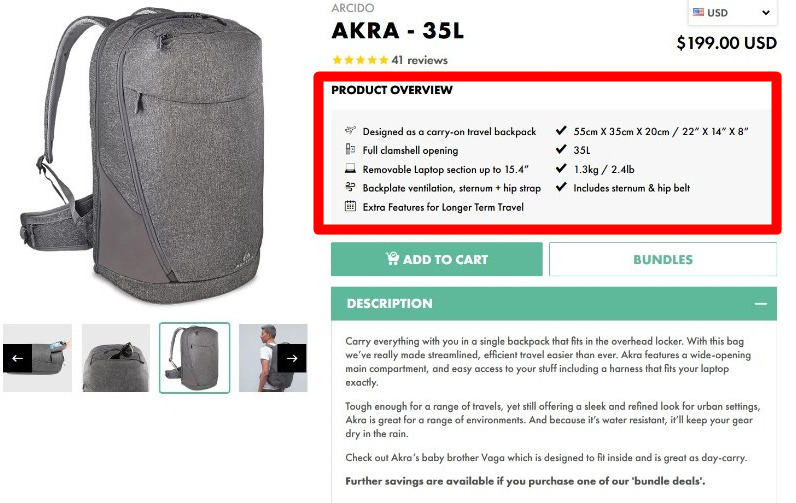
Apart from the product description, your page design also matters when it comes to making the best use of your e-commerce website.
A page design is a way a page layout is organized and presented on an e-commerce website. It’s the way you create your webpage with the right choice of color scheme, fonts, images, and more in line with your branding to influence customers’ buying decisions.
It doesn’t take users more than 50 milliseconds to form an opinion about a website. This means the page design can also affect your conversion rates. A user-friendly page design helps visitors to navigate your website easily and quickly, find the information they need, and, eventually, make purchases.
Crafting Compelling E-commerce Product Descriptions
So, we’ve established the importance of product descriptions and page design. It’s also essential to learn how to create compelling product descriptions for your e-commerce website.
A compelling product description is an important part of your sales strategy. The aim of each product description should be to offer more information about the product and ultimately drive the customer to make a purchase. We’ll discuss the best practices for effective product descriptions in the sections below.
Mistakes to Avoid in Writing Product Descriptions
Knowing what to avoid when writing product descriptions is just as crucial as knowing what to write. Here are the common mistakes you should avoid when writing product descriptions.
- Excessive Information
While you should offer clear information to your customers through your e-commerce product descriptions, it’s also possible to offer too much information. You may lose your customers’ interest when you create a lengthy product description. Most people prefer to read just what they need without extraneous information.
- Insufficient Information
Apart from offering too much information, offering insufficient information is another mistake you should avoid when writing product descriptions. Product descriptions serve as the equivalent of an employee at a physical store telling customers what they need to know about a product.
Your customers are more likely to leave if they can’t get enough details about the product they’re interested in. This is why offering all the information your customers will need to make an informed purchase decision is important.
There are basic elements that must always be included in your product description (we’ll discuss this in the coming sections).
- Duplicating the Manufacturer’s Description
Another mistake you should avoid is copying the manufacturer’s description verbatim when creating product descriptions. If you do this, you’ll likely have the same product description as other e-commerce business owners selling the same product.
This will affect your SEO rankings as it will be termed duplicate content. To avoid this, create unique product descriptions that will do a good job of providing relevant information.
- Large Blocks of Text
While it’s necessary to be as descriptive as possible when creating product detail pages, a common mistake is to create large walls of text that can leave your customers disinterested in reading the rest of the page. Always ensure to break up large blocks of text with images, videos, and other visual elements that can keep the reader’s attention.
- No CTA
After writing a product description, a big mistake would be not including a call to action. After reading all the details about a certain product, the call to action directs the customer to perform your intended action. Leaving this out can reduce your conversion rates. Some customers may simply forget or procrastinate purchasing decisions if you leave out a compelling call to action.
2 Prime Examples of Effective Product Descriptions
Let’s take a closer look at effective product descriptions and product pages in action:
- HappySkinCO
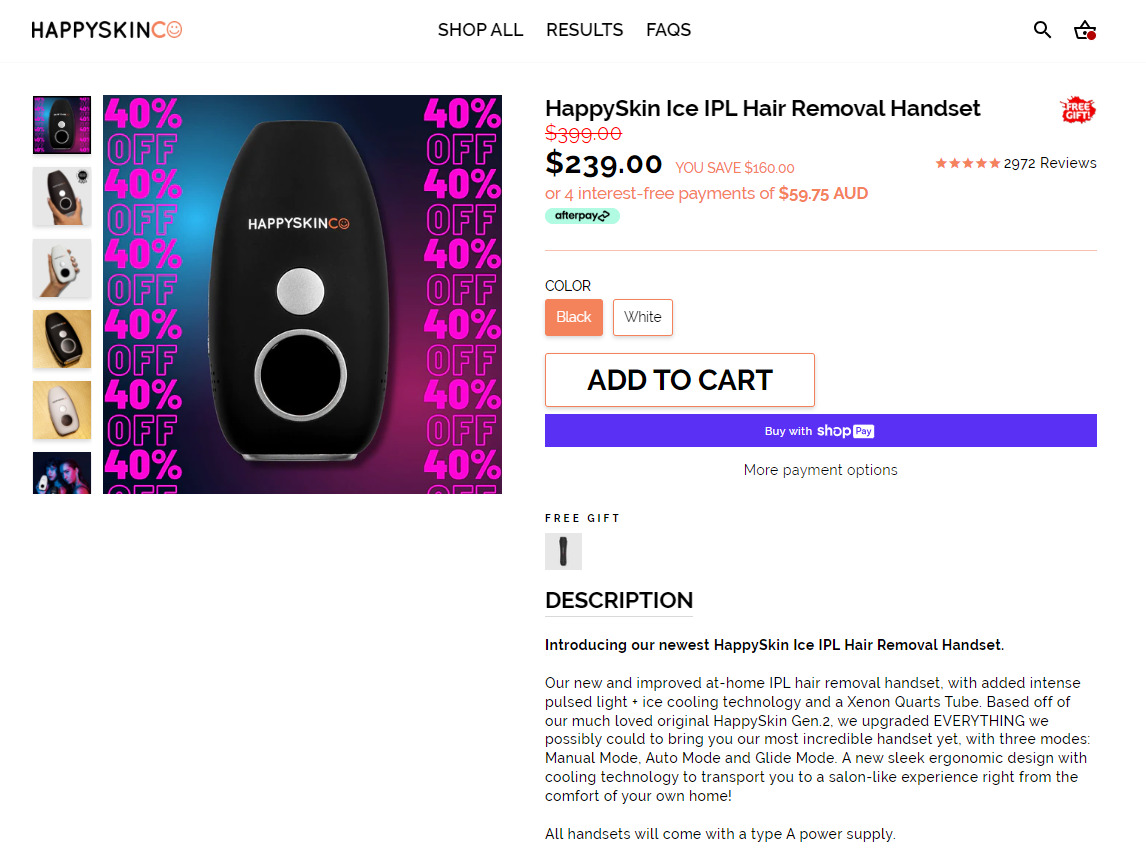
HappySkin’s product description shares enough relevant details about the product, including the benefits and a clear call to action.
- BeatsbyDre
Here’s another example of an effective product description by BeatsbyDre.
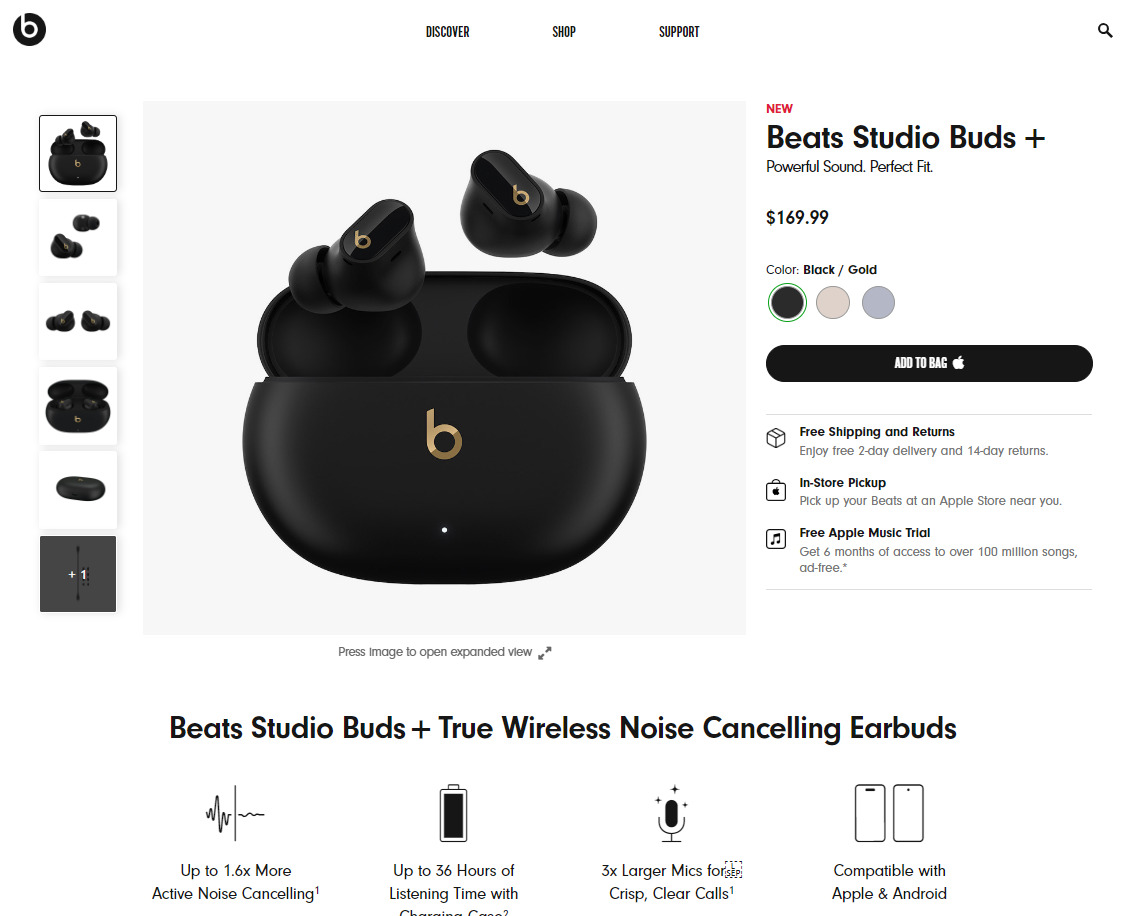

The product description states essential details about the product as well as its unique features for customers who are motivated by sound quality, design, and other such information. It also includes a call to action and shipping information.
Essential Components of E-commerce Product Descriptions
Some essential components must be present when creating an effective product description. Let’s see what they are.
- Headline
The headline contains the name of the product or the product group being described. It should include the exact brand name. This should be specific and as simple as possible.
- Product Description
This is one of the most essential components of the product description page. The product description should give an accurate knowledge of the product, as well as its must-have features. This should be written in the right tone and language.
The product description should highlight what makes the particular product useful and why customers should purchase it. It shouldn’t be too lengthy or too short — just what the customer needs to make an informed purchase decision.
Also, the product description should include relevant keywords to boost the SEO rankings.
- Product Images
Product pictures are a crucial component of an e-commerce product description. You should include sufficient high-quality images of the product being displayed to serve as a visual break from walls of text in the product description.
These high-quality pictures should cover various angles of the displayed product to help customers gain a good feel of the product they’re interested in.
- Key Features
To help customers understand the key information about the product from a quick read, you can include bullet points or a list of the most important product features. This can also contain the specific product specifications as listed by the manufacturer.
- Price
One key thing customers look for in e-commerce product descriptions is the price. You should display the price of the product clearly and in a section where a prospective customer can see it easily.
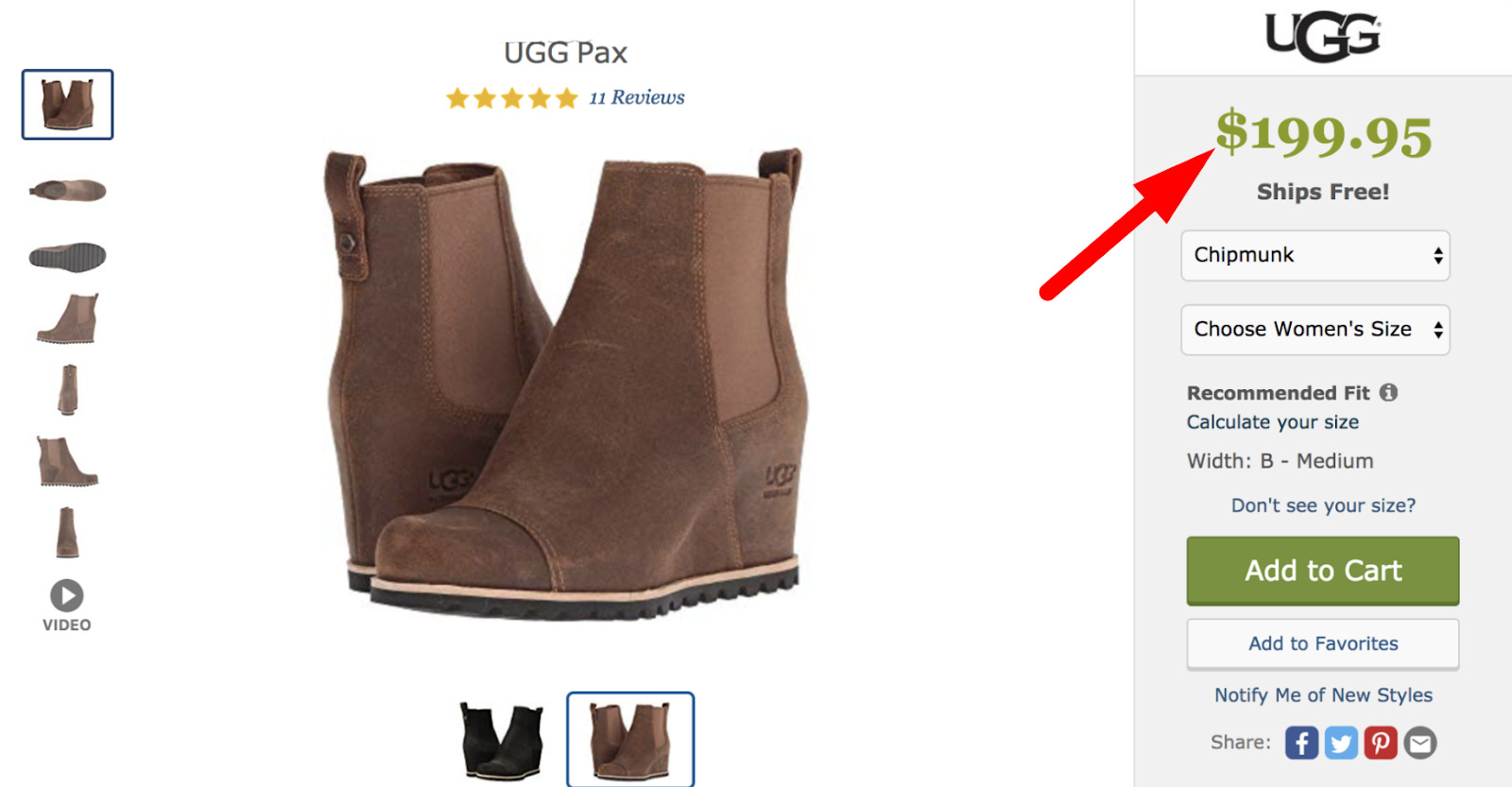
Usually, product prices are displayed directly below the product images or under the headline. Product prices should also be displayed close to the CTA. If there are discounts or time-limited offers, ensure you make them clear.
- Call-to-Action
Another essential component that should be present in a product description is the call to action. The call to action tells the viewer what to do after viewing the product description. It is quick, short, and precise, e.g., Buy Now or Add to Cart.
- Product Availability & Shipping
While reading the product description, the viewer will be eager to know if the product is still in stock. This should be clearly stated in the product description. For example, if the product is limited in stock, it should be included under the product description. This can further influence the customer to make a purchase decision faster.
Also, you should include the shipping information and costs upfront. The viewer should be able to get an idea of the total cost of purchasing a particular product from the product description page.
- Reviews
One essential component of an e-commerce product description is social proof. Research shows that 98% of consumers read online reviews before making a purchase decision. Adding social proof such as reviews, industry awards, or star ratings can help convince a potential customer to purchase a product.
Balancing SEO and Creativity in Descriptions
It’s necessary to learn how to strike an effective balance between SEO and creativity when writing product descriptions for your e-commerce website. If your product pages are well-optimized without being creative and compelling, you will lose the views you get from having a good SEO ranking.
On the other hand, if you create compelling product descriptions that aren’t SEO optimized, you’ll struggle with getting visitors to your e-commerce product pages. Your product descriptions should be tailored to your target audience and search engines at the same time.
You should study your target audience enough to know what they’re looking for and how best to connect with them through creative product descriptions. Also, you should ensure your product descriptions contain the right target keywords and meta titles to boost your SEO.
You can ensure creativity while ensuring your descriptions are SEO-optimized by creating unique content that is filled with relevant information and industry keywords.
Building High-Converting Product Pages (With Examples)
Your product page is a significant part of the e-commerce sales funnel. Most customers are either influenced to make a purchase decision or not after visiting the product page.
See some major practices that are instrumental in creating high-converting product pages.
The Significance of Product Images
Product images are crucial to having high-converting product pages. While text descriptions can do a good job of describing the product, product images help to give a perfect description alongside the text.
Check out this example of a product description page on Amazon with clear images. There’s an option of viewing the product in different colors.
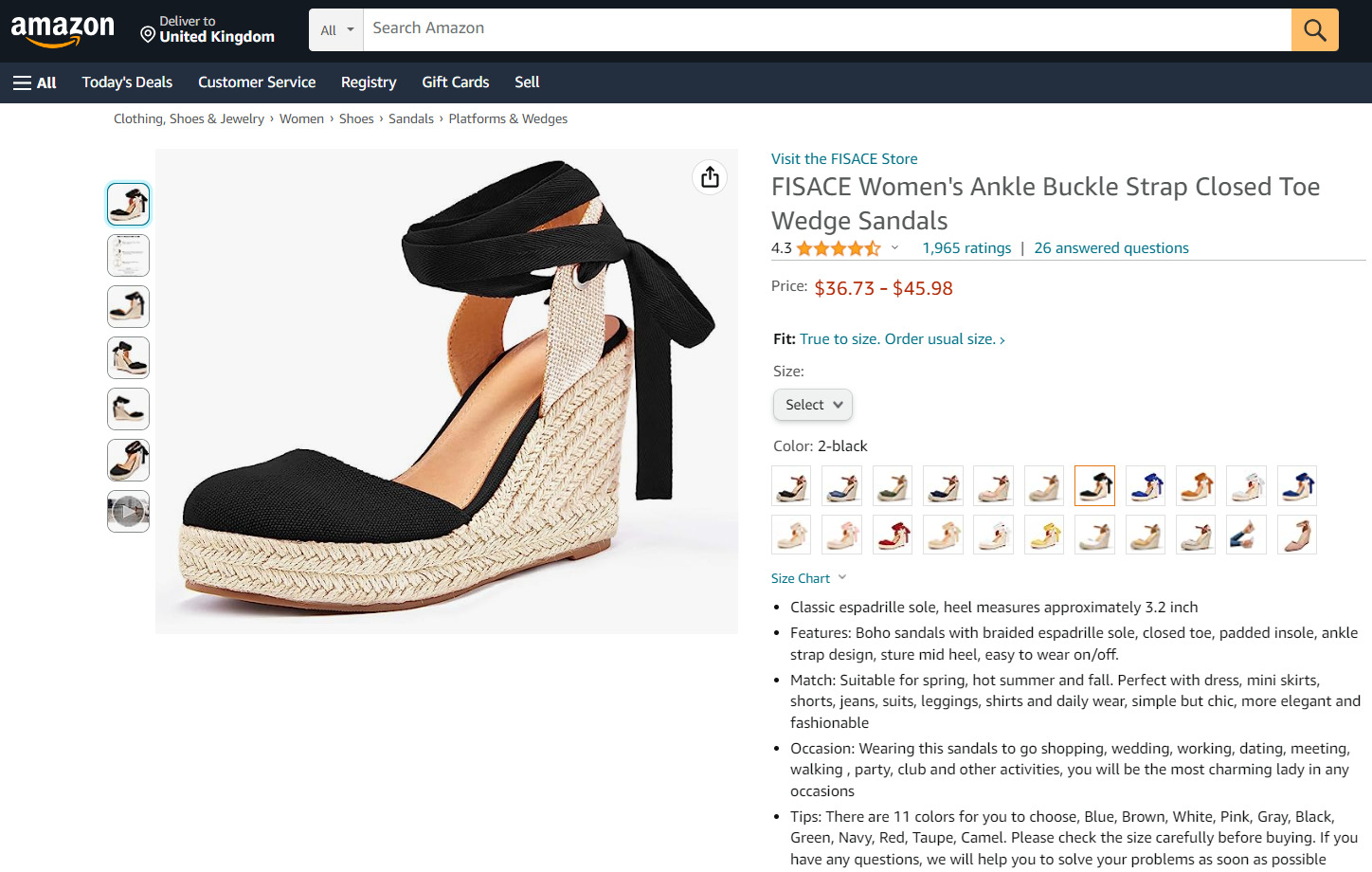
High-quality images can help to make your products look more desirable. A lot of consumers rely on visual information to make a purchase decision. A potential customer will be reluctant to purchase any product if they do not know what it looks like.
Utilizing Eye-Catching Call-to-Action
For a product page to serve its purpose, it should include a call to action that the readers can’t miss. The call to action should be brief and direct. It tells the customer what to do.
Here’s an example of a clear call to action—

The call to action button should be prominent; however, it should fit in with other design elements on the product page.
Good navigation is also essential in building high-converting product pages. Visitors to your e-commerce website should be able to switch between pages seamlessly. Each product page should be well arranged with standard colors, fonts, and page titles.

Other necessary elements include the main navigation, search bar, store locator, and navigation path. You can also include more visual elements to help customers switch between different product pages.
Incorporating Videos for Better Engagement
Including videos in your description is another way to engage potential customers better. Videos provide a better experience when included on product pages.
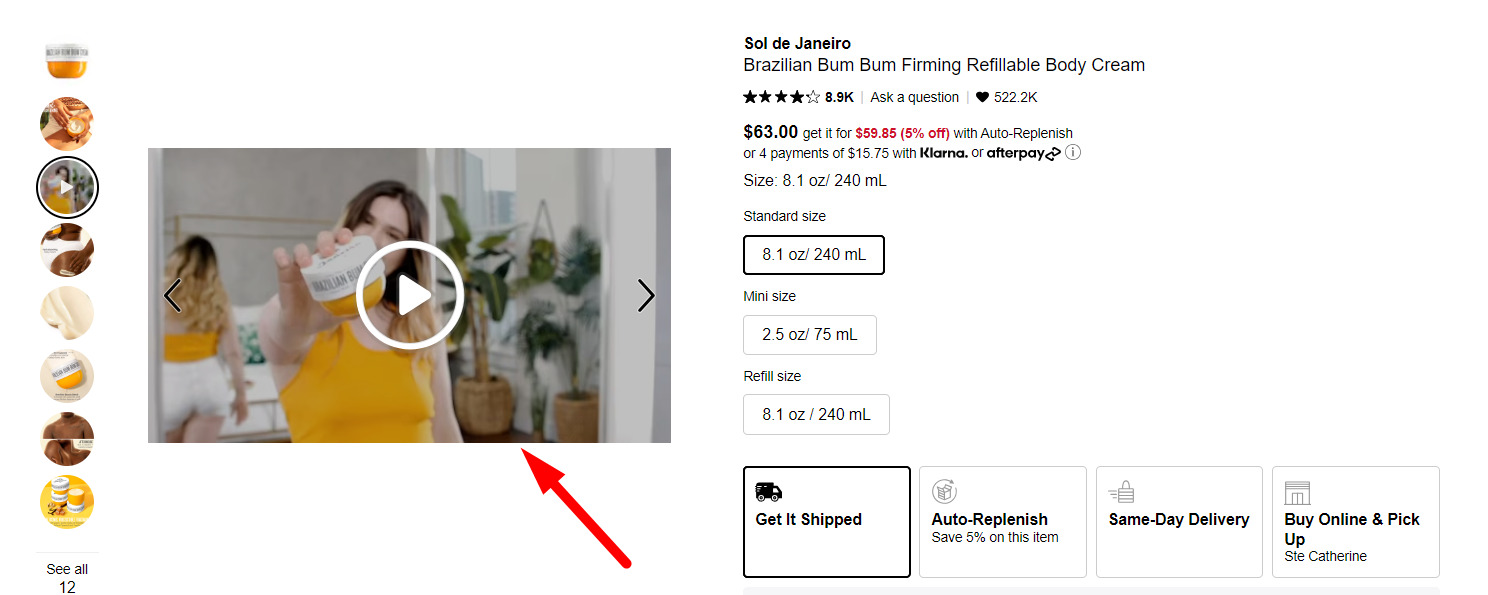
Many customers will likely prefer seeing a video of the product instead of just text or images. Customers can view the product in action through the product videos, which also builds customers’ confidence in the brand and reduces doubts about the product.
Creating Urgency and FOMO Tactics
To increase the conversion rate, you can portray urgency on your product pages. Urgency helps to create a sense of importance while encouraging customers to take action faster. You can do this by including limited-time offers, abandoned cart discounts, timers, and scarcity messaging.
Ensure you clearly state what your customers will miss out on if they fail to take action quickly. Social proof and limited stock notifications can be effective FOMO tactics to drive customers to act quickly.
Implementing Upselling and Cross-Selling Strategies
When customers visit your product pages, it shows they are interested in what you offer. You can take advantage of this further by implementing upselling and cross-selling strategies.
With upselling strategies, you can encourage the customer to purchase a more expensive version of the same product or extra features to the same product. When upselling, ensure you state the additional benefits clearly as well as the differences while displaying the offer where customers can view them easily.
Cross-selling involves promoting related products or complementary products. You can display related products on your product page while explaining how the related products can work with what the customer is interested in originally. Here’s an example of related products being displayed alongside the main product.
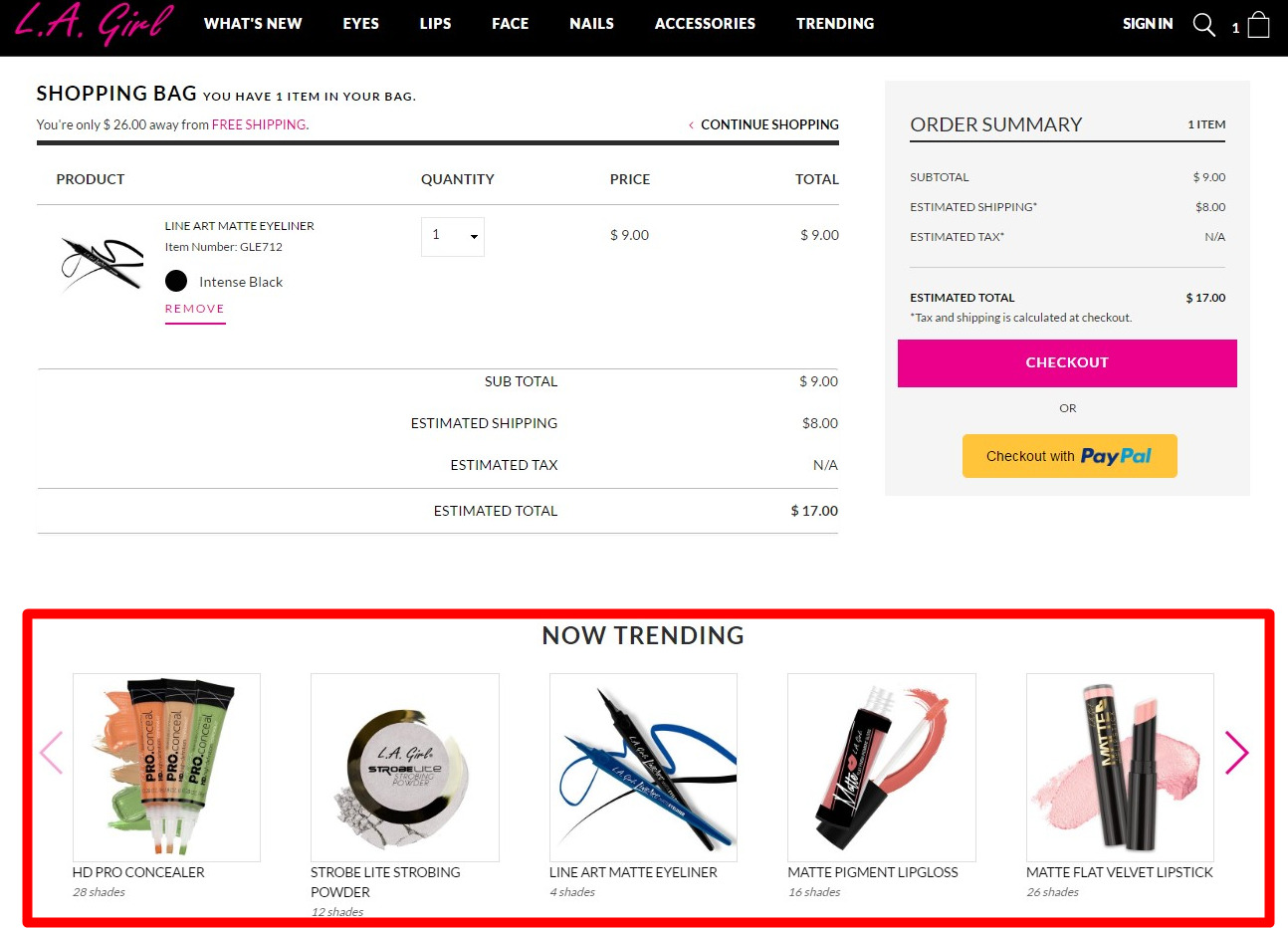
To further encourage the customer to purchase the products, you can create a bundled sale or add limited-time offers on certain related products.
Trust-building Through Social Proof, Trust Badges, and Customer Reviews
Customers pay attention to social proof when making a purchase decision. To drive conversions, you can build trust by including positive feedback from other customers who purchased the same product.
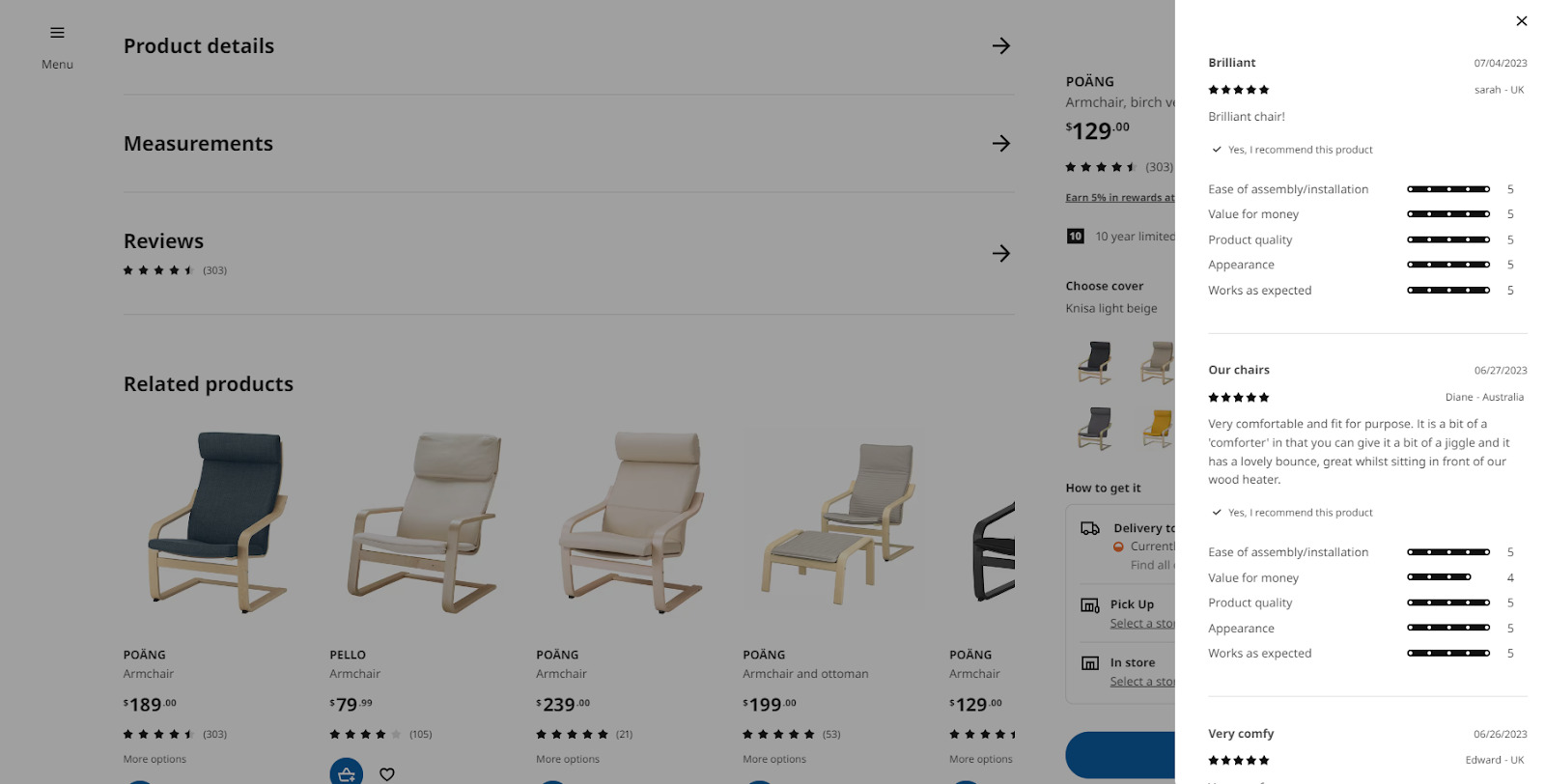
Star ratings and customer reviews serve as effective social proof that can be used to build trust and confidence. Also, trust badges can serve as solid guarantees and will make customers feel more comfortable.
Importance of Mobile-first Design in Product Pages
To enhance user experience, adopt a mobile-first design policy for your e-commerce product pages. Generally, the interface varies largely when viewed on desktop versus mobile.
However, a large percentage of your customers will view your e-commerce product page on mobile devices. “Mobile-first design” means the product pages are designed and optimized for mobile devices.
A mobile-first design can help to make your website easily accessible and engaging. A mobile-first design allows you to easily increase the page load speed while ensuring smoother navigation.
This design is also essential to search engine optimization. Google also prioritizes mobile-friendly websites in its search algorithm. In summary, a mobile-first design is crucial to having a high-converting product page.
Utilizing Juphy for E-commerce Social Media Support
Having excellent product pages and detailed product descriptions is great. However, you must be ready to back up your product pages with real-time social customer support. Here’s how Juphy can help you:
Juphy’s Unified Inbox and Social Chat Widget for Product Queries
Have you ever found a great product on a website but had some questions about the product while you were shopping? The difference between you buying the product and dropping off the site was getting instant answers to your questions.
Sometimes, would-be customers have questions about your products while shopping, or they may have challenges with making payments. A social customer support agent on standby to answer their questions and address challenges could be the deciding factor in whether or not they buy your product.
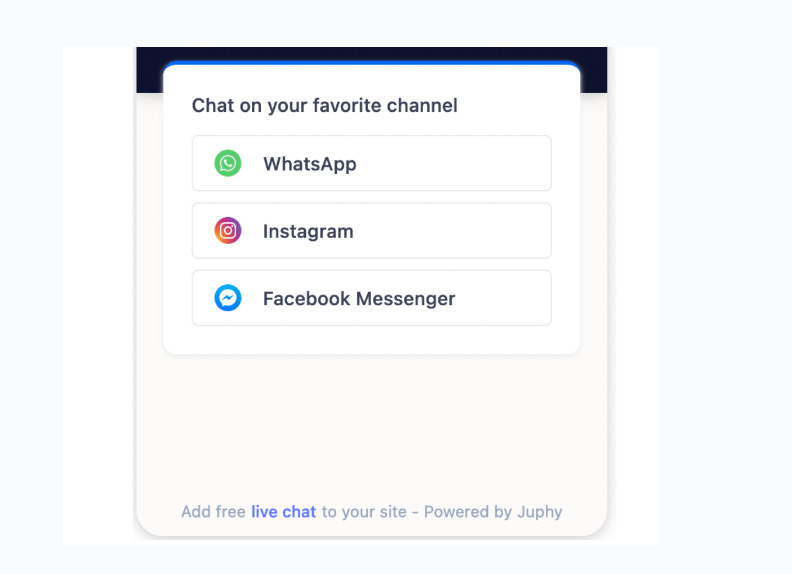
Juphy allows you to integrate a social chat widget on your web pages where customers can reach out to you about product queries. The social chat widget connects your website visitors directly to a social media account of your choice (WhatsApp, Instagram, Facebook) so that they can start conversations with you about the product in question.
What’s more, Juphy’s unified inbox is the perfect tool to keep track of all the conversations coming into your social media accounts. It provides a consolidated dashboard where you get real-time notifications about messages from all the social media accounts you’ve linked to Juphy.
This way, you never miss a message from a potential client again!
Managing Product Feedback with Juphy’s Comment and Review Management
When you post about products on your social pages or even run ads about certain products, comments and feedback are bound to come in. If your website makes provision for it, customers will also leave reviews about your products and services.
As a business owner who is pulled in different directions, it’s easy to get lost in running your day-to-day business, so you miss out on essential product feedback from these channels.
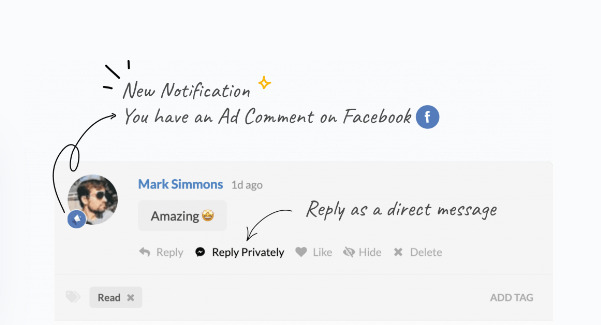
Thankfully, Juphy has an effective comment and reviews management system (currently the fastest solution on the market). It collates all the comments and reviews your products receive from your social accounts, ads, and even review sites like Google My Business into one space.
With the moderation feature, you can hide and delete troll comments on your pages, as well as like and reply to comments, all from the Juphy dashboard and in real time. You can export all your comments with a single click!
Juphy’s AI-Powered Canned Responses for Common Product Questions
Do you ever get tired of answering the same questions about your popular products every day? Our AI-powered canned responses feature will save you loads of time and energy.
You have two options. You can create your own custom pre-written answers, save them with the canned responses feature, and send them to clients as needed.
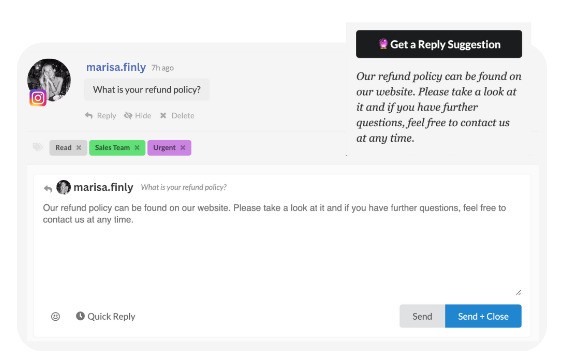
Alternatively, you can get reply suggestions from ChatGPT when a client asks popular questions about your products or services on your page. This will help you and your team save even more time and handle tickets faster than ever before.
This Quick Reply feature is the game changer for teams that deal with large orders and multiple tickets daily. If you’ve been wondering how you can improve your response rates, Juphy’s canned response feature is the answer you seek.
Conclusion
Product description pages are an essential part of an e-commerce website. They are instrumental in driving traffic, increasing SEO rankings, offering valuable information to customers, and increasing conversion rates.
To create high-converting product pages, there are certain pitfalls to avoid and practices to adopt. With the strategies explained in this guide, you can easily create effective product descriptions in no time. Boost your e-commerce efforts with Juphy by providing customers with quick AI-powered replies on any social channel of your choice.
Never leave a customer’s message, comment, or review hanging when you have the top-line unified sales tool as your efficient sidekick. Get the best of Juphy’s e-commerce features and start your Freemium Plan today!
FAQ
A product description is a written copy describing the product being sold online to customers. Through product descriptions, customers can understand what the product offers, why they need it, how they can benefit from it, the unique features, and how to use it.
On the other hand, page design is how a page layout is organized and presented on an e-commerce website. It’s how you create your webpage with the right color scheme, fonts, images, and more in line with your branding to influence customers’ buying decisions.
Creating product descriptions for your e-commerce products helps boost your website’s SEO rankings on search engines. The content of your descriptions drives traffic to your website, boosts your conversion rates, and provides valuable information for your customers. A user-friendly page design helps visitors navigate your website easily and quickly, find the information they need, and eventually make purchases.
Key strategies include balancing SEO and creativity in product descriptions, using high-quality product images, implementing clear calls-to-action, enabling easy navigation between product pages, incorporating engaging videos, creating urgency through FOMO tactics, implementing upselling and cross-selling strategies, building trust through social proof, and adopting a mobile-first design. Using customer support tools like Juphy can further enhance customer interaction and feedback management.
SEO in product descriptions helps improve your e-commerce product page ranking in search engine results, driving more traffic to your site. It involves using relevant keywords, meta titles, and unique content in your product descriptions. However, it’s important to balance SEO with creative, engaging content to connect with your target audience effectively.
Juphy offers several tools that enhance your e-commerce business. Its Unified Inbox and Social Chat Widget can address product queries in real time, increasing customer engagement. Its Comment and Review Management feature ensures you never miss out on essential feedback. Plus, Juphy’s AI-Powered Canned Responses can speed up the process of answering common product questions.
Related Article – Conversion Tracking Guide for Social Selling

Discover the power of conversion tracking in improving your social selling strategies, measuring ad effectiveness, and boosting conversions. Read more now!

